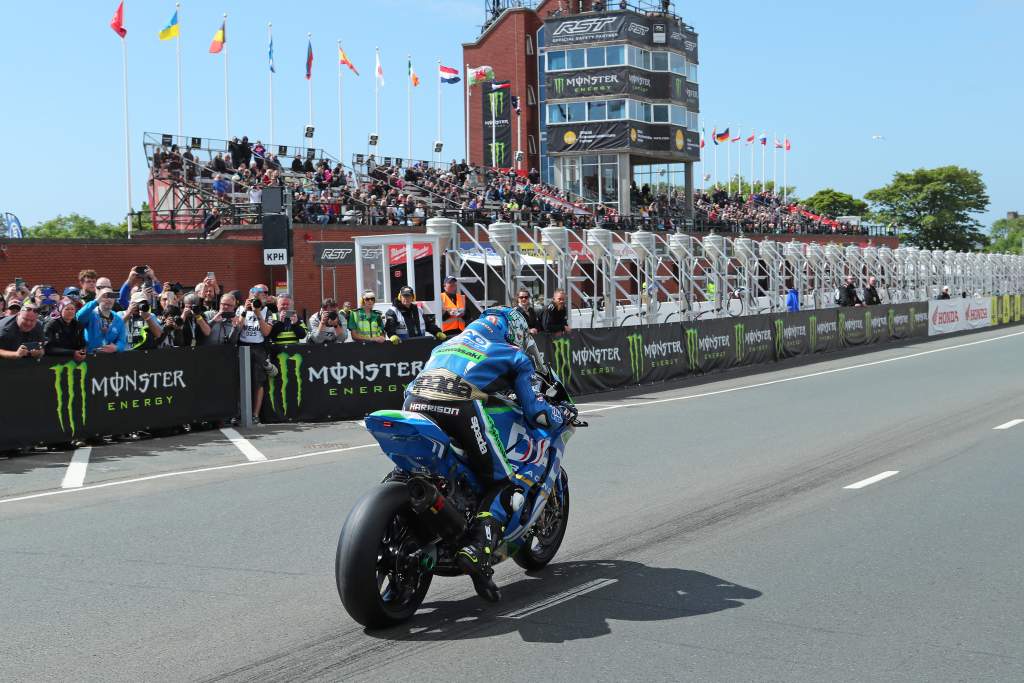“I accept every time I get in my car there is a 20% chance I could die, and I can live with it, but not 1% more,” a fictionalised Niki Lauda said in Ron Howard’s 2013 Formula 1 movie Rush.
Truthfully, none of us are adept enough with numbers to calculate risk, in whatever activity, with such precision – or in tune enough with our own priorities to be able to set a hard limit.
But there’s a kernel of truth to it, not just for motorsport competitors but for many of those who in any way participate in furthering the ‘motorsport industrial complex’. As a sportswriter, I couldn’t tell you how dangerous a motorsport discipline can actually be before I no longer feel comfortable taking it in or covering it. But what I could tell you, for years and years, is that wherever this imaginary bar was, the Isle of Man TT overshot it like Mondo Duplantis clearing a pole vault world record – i.e. with some serious margin to spare.
A list of 260+ fatalities in less than half the events is grim. A 2022 edition – the subject of ITV documentary No Room For Error, premiering today, a week before the start of the 2023 edition – with six competitors killed feels unconscionable.
Wherever possible and professionally responsible, I’ve largely ducked opportunities to contribute to Isle of Man TT coverage in my places of employment. That’s changed this year when my colleague Simon Patterson, in the middle of a TT-themed editorial conversation, told me: “I really want you to watch the new TT doc – you’re the target demographic for it and I’m super curious whether it’ll change your stance.”
Despite my aversion to the event, I care about motorsport – and that includes the TT – enough to have accepted that in a heartbeat.
Four 45-minute episodes later, it would be so narratively satisfying to say ‘ah, I get it now!’. “I finally understand.” Unfortunately, that is just not the case – it probably never will be. But I’m closer to that point than I had been – and suddenly much more invested than I’d like to be.
MINOR SPOILERS FOLLOW FROM HERE
Though we really should avoid painting every sports doc out there as a Drive to Survive offshoot, as it’s not like there’s been a shortage of sports docs before F1’s big Netflix hit, it’s at least clear enough that No Room For Error and Drive to Survive are apples from the same tree.
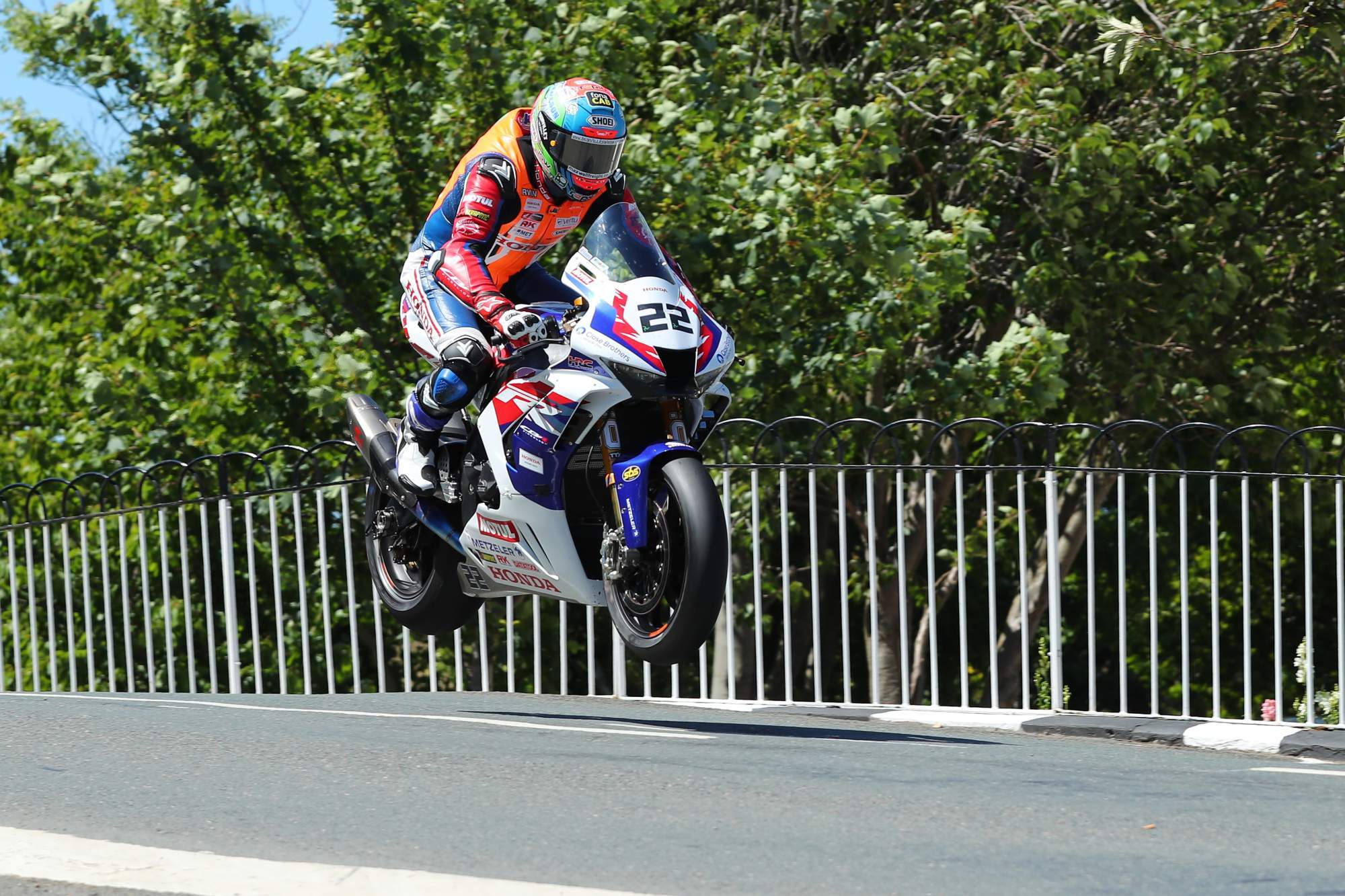
It also feels fairly clear – though this is obviously subjective – that No Room For Error is just better than its long-running, glitzy but flawed F1 counterpart. The editing is less manic, the interviews more interesting. The pacing sags in a couple of places, but the feeling of authenticity is remarkable. You’d have to be on the ground to know how genuine it really is – but the fact it is inherently, intuitively believable is a good start.
For seasoned or even casual TT fans, that’s as much of a summary as I feel qualified to give. It’s worth seeing. Simple as.
But what about someone who, like me, may see the obituaries rolling in on a yearly basis, look at the onboard footage that screams ‘how is this actually not double-digit deaths every year?’ and ultimately come to the conclusion of ‘why hasn’t anyone stopped this yet?!’.
In his seminal 1859 work On Liberty, English philosopher and parliamentary John Stuart Mill wrote: “The sole end for which mankind are warranted, individually or collectively, in interfering with the liberty of action of any of their number, is self-protection. The only purpose for which power can be rightfully exercised over any member of a civilised community, against his will, is to prevent harm to others.
“His own good, either physical or moral, is not a sufficient warrant. He cannot rightfully be compelled to do or forbear because it will be better for him to do so, because it will make him happier, because, in the opinions of others, to do so would be wise, or even right. These are good reasons for remonstrating with him, or reasoning with him, or persuading him, or entreating him, but not for compelling him, or visiting him with any evil in case he do otherwise.”
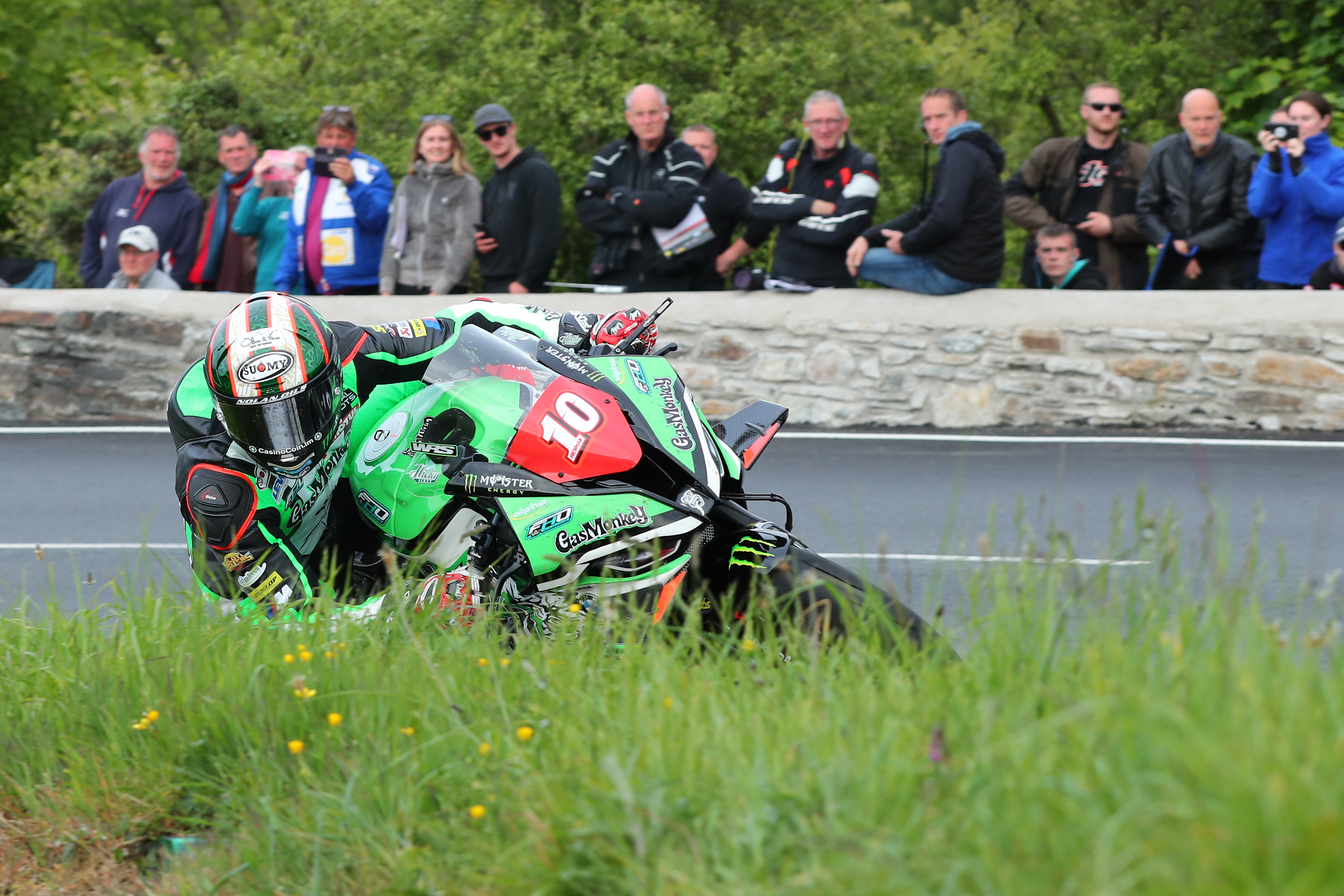
Those words were stirring to read as a young university student, and there’s still a certain kick of them now, even as adult life tacks on all the complexities and interpretations that may change your perspective. In our understanding of modern society, at least from my admittedly Western and limited perspective, we have accepted that society will generally try to keep its individuals alive even if those individuals – even in perfectly sound mind – have disparate levels of actually being bothered about staying alive.
Isle of Man TT is, in a way, a total manifestation of On Liberty, though presumably not quite what Mill had in mind.
But even in its particular situation – with adults participating and keenly aware, as the doc makes clear over and over again, that chances are extremely high that every year some of them will not come home – you can’t help but think about the aforementioned “harm to others”. What about the families – the partners, children, parents, who grab a big chunk of the limelight in No Room For Error – and the emotional turmoil of hearing the circuit speakers or TT Radio announce a red flag? What about the marshals and the medical professionals attending to the scenes, which are bound to be routinely horrifying but also long-term traumatic?
No Room For Error doesn’t really grapple with those questions – fair enough, it’s not as if I’ve got an answer. For the doc, the starting off point is ‘they are still allowed to do this, and they all want to do this, so here they go’. And the central thesis, as much as there is one, is ‘why’.
Problem is, it’s clearly not something you can explain with words – although several riders are tasked with doing just that.
“The world’s changing, drastically really. And the fact we can still come and do this is a big sort of ‘f**k you, this is what it’s all about,” says race regular James Hillier, who won the Lightweight TT race in 2013, in the opening minutes.
Hillier doesn’t say if the world is changing for the better or for the worse, and it’s not for me to deduce. But his sentiment certainly rings familiar of a wider-motorsport-beyond-TT view – that the world has been overly sanitised, and racing too with it. That view I can’t say I’m particularly sympathetic to, but to pretend it isn’t part of the Isle of Man TT’s allure would be disingenuous.
In parallel, the theme of danger being a virtue also comes up. The risk is part of “how motorsport should be”, per TT superstar Peter Hickman. Mostly though, it’s just about how it feels. The buzz a TT run offers to these riders is clearly more than what they’ve been able to get from anything else in life. And in that sense, perhaps just two seconds of onboard footage – of which there’s a smattering in the documentary – do a better job of conveying this than a thousand words could.
“Over the next two weeks six competitors will lose their lives” an early title card warns. Mark Purslow is killed in Supersport qualifying early into the two weeks. A few days later, the Supersport race claims Davy Morgan.
Two Sidecar crashes at Ago’s Leap – named after the very rider who ultimately decided the TT was too dangerous for him to continue – end the lives of two crews. Cesar Chanal and Olivier Lavorel and the father-and-son duo of Roger Stockton and Bradley Stockton, the incidents six days apart. Chanal is actually misidentified as Lavorel initially due to having his team-mate’s dog tags – the documentary does not touch this – but Lavorel then dies from his injuries anyway several months later.
Not much time is spent on any of those deaths, and every section dealing with them follows a blueprint. The red flag comes out, the action is suspended, then called off for the day. Then, a statement read out on TT Radio by ex-MotoGP commentator Steve Day, familiar words in a familiar tone, taking on a near-Groundhog Day effect by the time the Stocktons have perished.
It is distressing but also refreshingly honest. After all, the 1982 edition is frequently cited as the only one without fatalities. It is a widely-accepted fact that every year somebody is not coming back. Would public displays of sorrow, a minute of silence, whatever, change anything? The race isn’t stopping – not even a suggestion – and you don’t want riders fixating too much on who will be next, because it’s not like they’ll withdraw. They won’t – so you don’t want them thinking about death.
And yet they do. Death is everywhere – once the event gets going, it is hanging over nearly every interaction, every conversation. The newcomers aren’t sleeping well, the veterans are practising some dark humour. “Hopefully, I’ll see you later on,” says Dean Harrison as he signs off from a vlog – and you feel that “hopefully” so, so keenly.
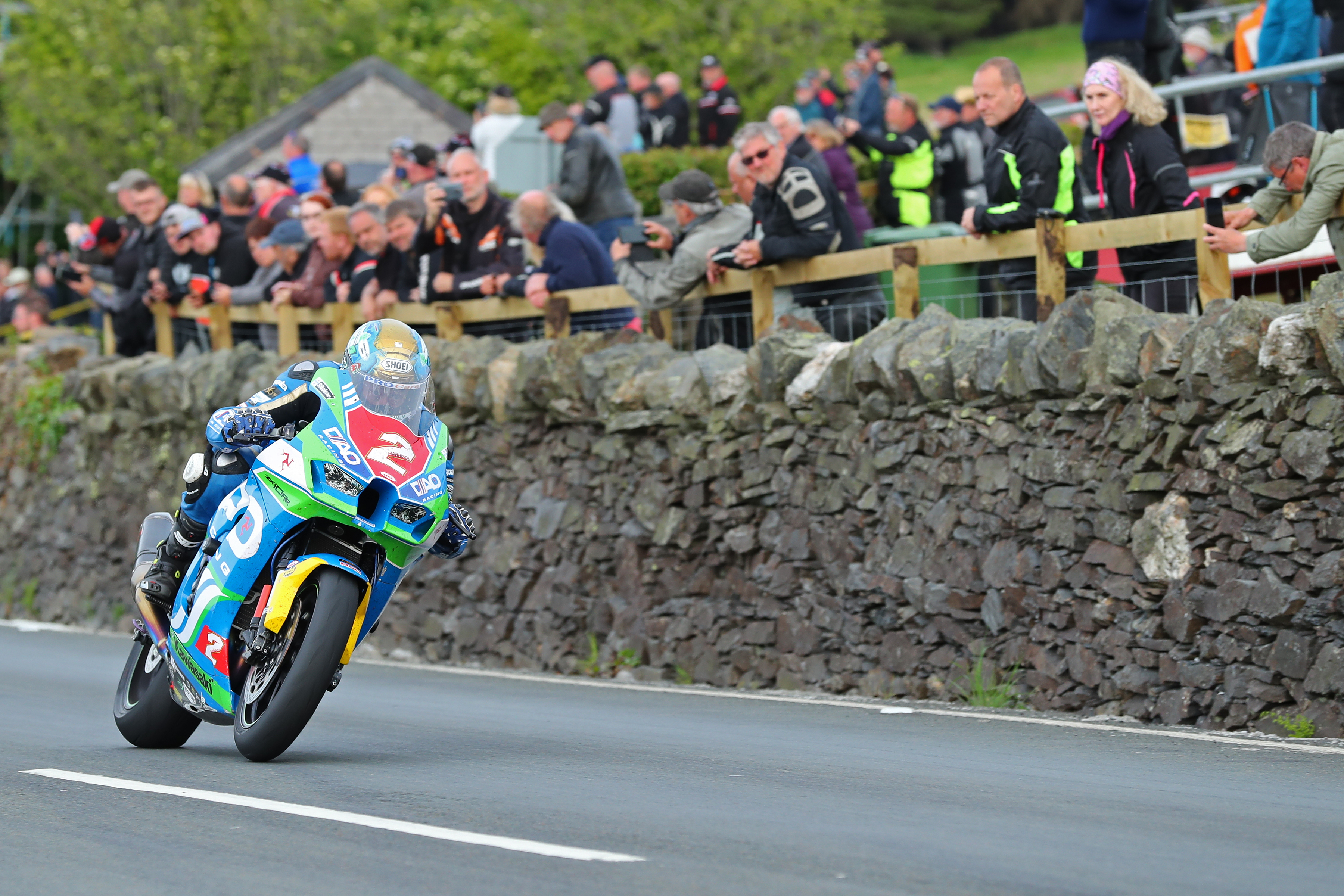
Even when the conversation has nothing to do with mortality, context gets a punch in. Lee Johnston, battling a persistent eye problem that ultimately forces him to park up for his own good, is arguably the breakout star here, a reliably warm and hilarious presence. But seeing his name was a trip thanks to even the most cursory knowledge of road racing news – as I realised he is the same Lee Johnston who had been left in critical condition and with brutal injuries by a recent North West 200 crash. He is, thankfully, “on the slow road to recovery”.
In another scene, having not just fulfilled the target of “seeing us later on” but also finished second in the Senior TT despite two separate bird strikes, Harrison is seen cleaning out bird viscera from his boot. His young daughter comes up, weeping loudly, not because of anything she’d seen but because she wants ice cream, which they go and get.
Family – whether in the paddock or just outside – is all around in the four episodes. There is less race footage than there is footage of riders interacting with their loved ones, and that is a winning choice.
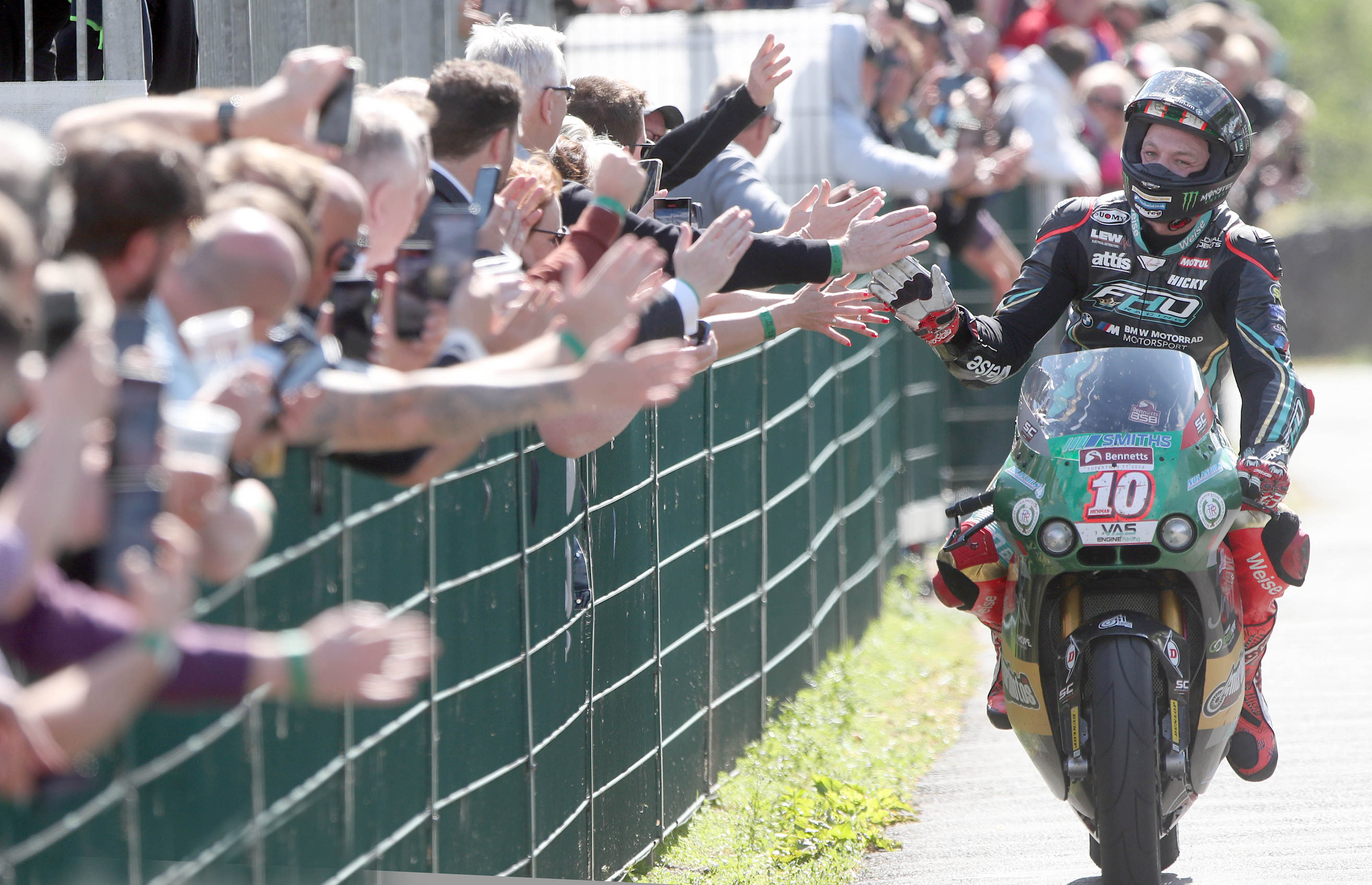
The documentarians smartly zero in on a key question to probe partners and parents on – ‘how could you possibly cope with being here and following along, knowing what every red flag could mean?’. Some are very invested and share in the passion, some are clearly more wide-eyed outsiders who are here for emotional support but more than any glory just want their loved ones to come home okay.
“It’s just something they do. It’s insane,” says Rene, the fiancee of American rider Chris Sarbora.
“Not much I can do about it other than be here and support him and try to be happy – like, I am. It’s something that he loves to do.”
Her voice cracks when she mentions the fireball crash involving Sarbora’s team-mate Sam West.
West is fine… ish. He’s limping. He wants to see out the race anyway. His partner, seemingly one of the marshals, writes a phone number on his arm in marker so that she can be contacted in case something happens. “Just finish the race,” she says.
Harrison’s partner Vicky is another standout. She and Harrison’s mother both admit they try to steer clear of the broadcast – “we know what they do, we don’t need to see it”. Vicky also reveals a detail of how she learned her significant other was a road racer that may snap your heart in half – and if it doesn’t, a later nonchalant revelation of a crushing medical diagnosis by one of the newer riders’ parents will do the trick.
All of that neatly ties into a recurring explanation for the ‘why’ – it’s a family thing. So many of the riders have some sort of road racing background in the family, usually very extensive. “If your dad’s a plumber, nine times out of 10 the son’s going to be a plumber,” says ex-Sidecar rider Nick Crowe. “And it’s probably a similar sort of situation.”
Crowe isn’t competing. His right arm is gone, amputated after a crash. His sons Ryan and Callum are riding instead, and they score their first podium.
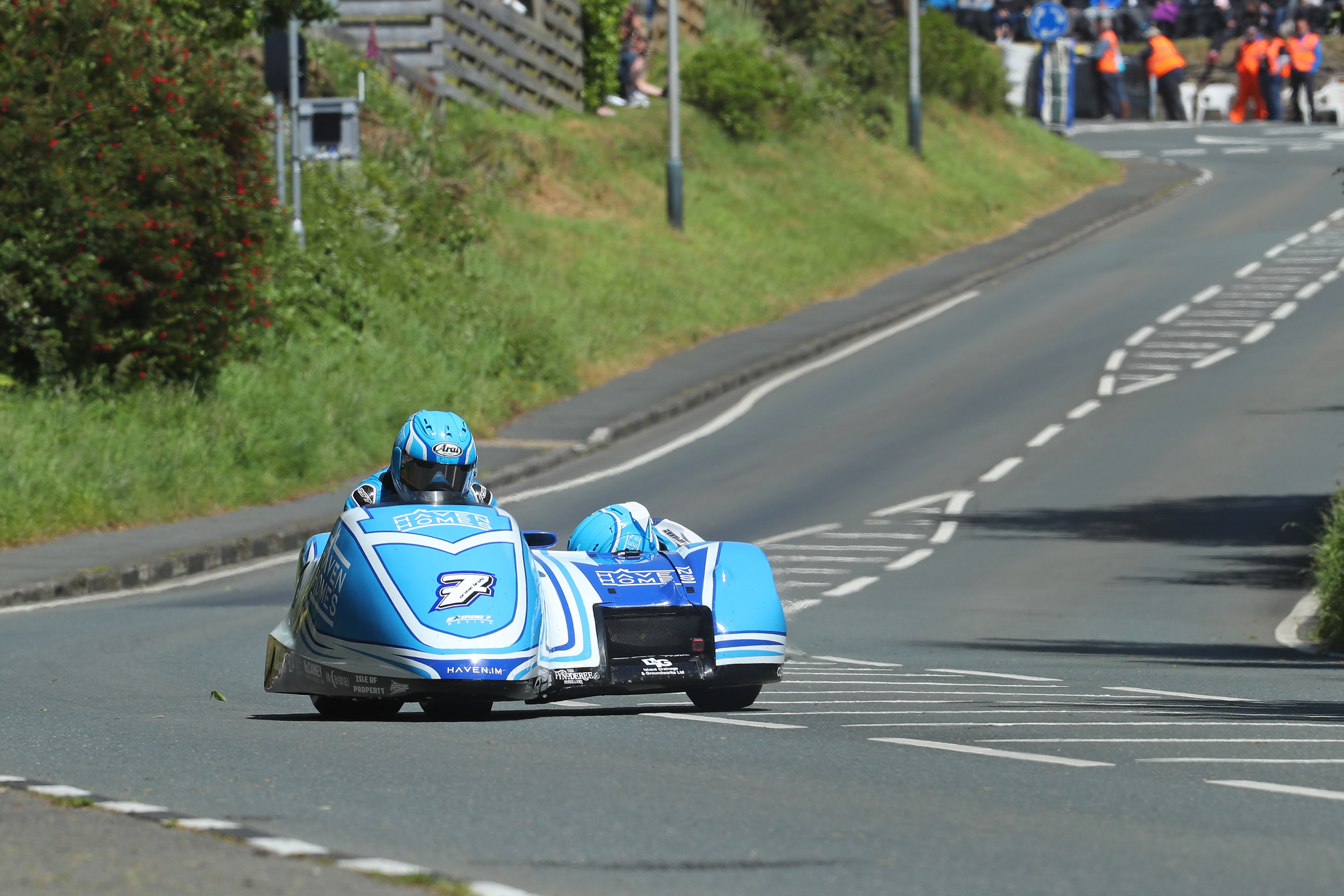
A remarkable story is shared by Sidecar legend Dave Molyneux. His father had perished in a 1977 Ulster Grand Prix crash, as passenger to John Oates, who also died. The Molyneux children received “about 500 quid” each as insurance payout, which Dave immediately invested in his first sidecar.
It’s “a vicious circle”, Harrison admits, his family having come from Sidecars and his children in attendance here. “It gets embedded in your head and the next thing you know you’re riding yourself.”
And therein probably lies the real ‘why’ for so many of them – a passion cultivated through environment.
On the one side, the familial histories on display aren’t necessarily a comfortable realisation. Yes, these are all sound-minded adults with agency, but their affinity for the TT has been conditioned by their background. For many of them, this is all they’ve known, and it’s – let’s be honest – not where they would’ve ended up with a different starting point, geographically or genealogically.
There are moments there, on the Mountain, that none of them like. It’s “the worst feeling in the world” to hear the circuit announcer, says Johnston, and he doesn’t seemingly mean the crash announcements or anything – just the message that it’s time to go racing.
Even for those who have been bit in some way by it – but are still around to be able to decide to continue or not – after many years and so much time invested it is so hard to give up a passion.
I remember vividly working an early-morning shift on November 18, 2018, and seeing Formula 3 racer Sophia Floersch’s high-speed crash at the ungodly Macau Grand Prix – in which the then-17-year-old went through the catch fencing at a genuinely unthinkable speed in what at first glance looked like an accident that wasn’t just fatal for her but for some of the on-site crew.
“This is f***ing stupid, and I might be done,” was how I felt in the immediate aftermath. “Time to go work in football or something.” But Floersch and everyone else thankfully survived, and here I am five years later, having seen worse accidents and certainly worse outcomes but having only further committed to a motorsport media career. It’s not easy to walk away if you’ve invested so much time and effort – what would you even do with yourself otherwise? Our world isn’t exactly built for fresh starts.
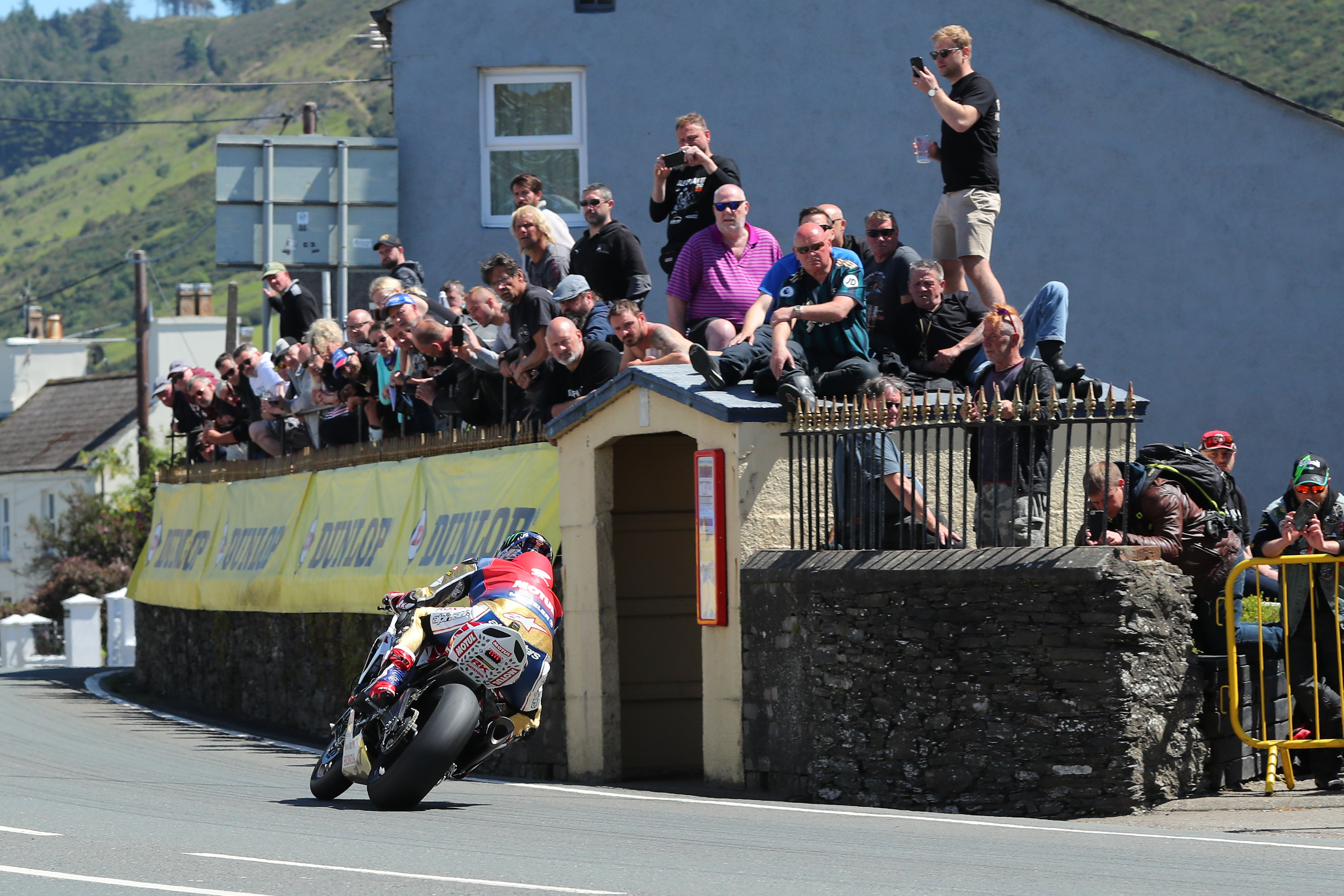
But it’s also not easy to walk away from something you love. I love racing, and the people who do the TT sure do love it. And you can see why – it is not a hard sell. The sights and sounds, the mystique of the place, the undeniable coolness of it. An onboard – or, hey, a still image! – conveys that instantly. “This is not for mere mortals,” it says.
And that’s not just for the flagship Senior TT race – there’s a lamentation expressed at one point that sidecars have a ‘Wallace and Gromit’ reputation, but helicopter footage of a Sidecar run, and what the passenger is doing at any given moment, is some of the most absurd, brazen, remarkable stuff you will ever see. It is, genuinely, a Mission: Impossible movie without the stunt choreography.
Who am I to want that taken away? Life, existence, are precious and end unfathomably quickly, especially at the TT – but life is hard enough, confusing enough, without people trying to put the kibosh on things you love, even if those things may end it. “It’s better to burn out than to fade away,” Neil Young taught us – and while I don’t know that I agree with that, I don’t know that I disagree either.
So, do I get it now? No, not really. There were several points in the documentary, with the fear pervasive and the smell of death so clearly in the air, that I almost screamed at the screen: “Just stop it. Go home. You don’t have to be here, to do this. Live to fight another day.” But this is the ‘fight’, and perhaps ‘live to exist another day’ doesn’t have the same ring to it.
The only thing I can say for sure is, I feel much more aware of the TT and particularly of some of its characters after the four-episode run. I desperately want them to get through the next couple of weeks without losing their lives or having to bury their loved ones.
Maybe one day it won’t be this risky, somehow. Or, maybe one day it will no longer mesh with our general sensibilities, and that’ll be that. “If the TT was to start up tomorrow, it’d never happen,” says TT legend Michael Dunlop, and you have to wonder whether someday, even with all the legacy and tradition, it will be too out-of-time.
If that day comes and I’m around to see it, I can’t say I’ll shed a tear. But, after No Room For Error, I will definitely feel a lot more empathy.
All episodes of ITV documentary No Room For Error have been released on Monday 22 May on ITVX and on the event’s own streaming platform TT+


